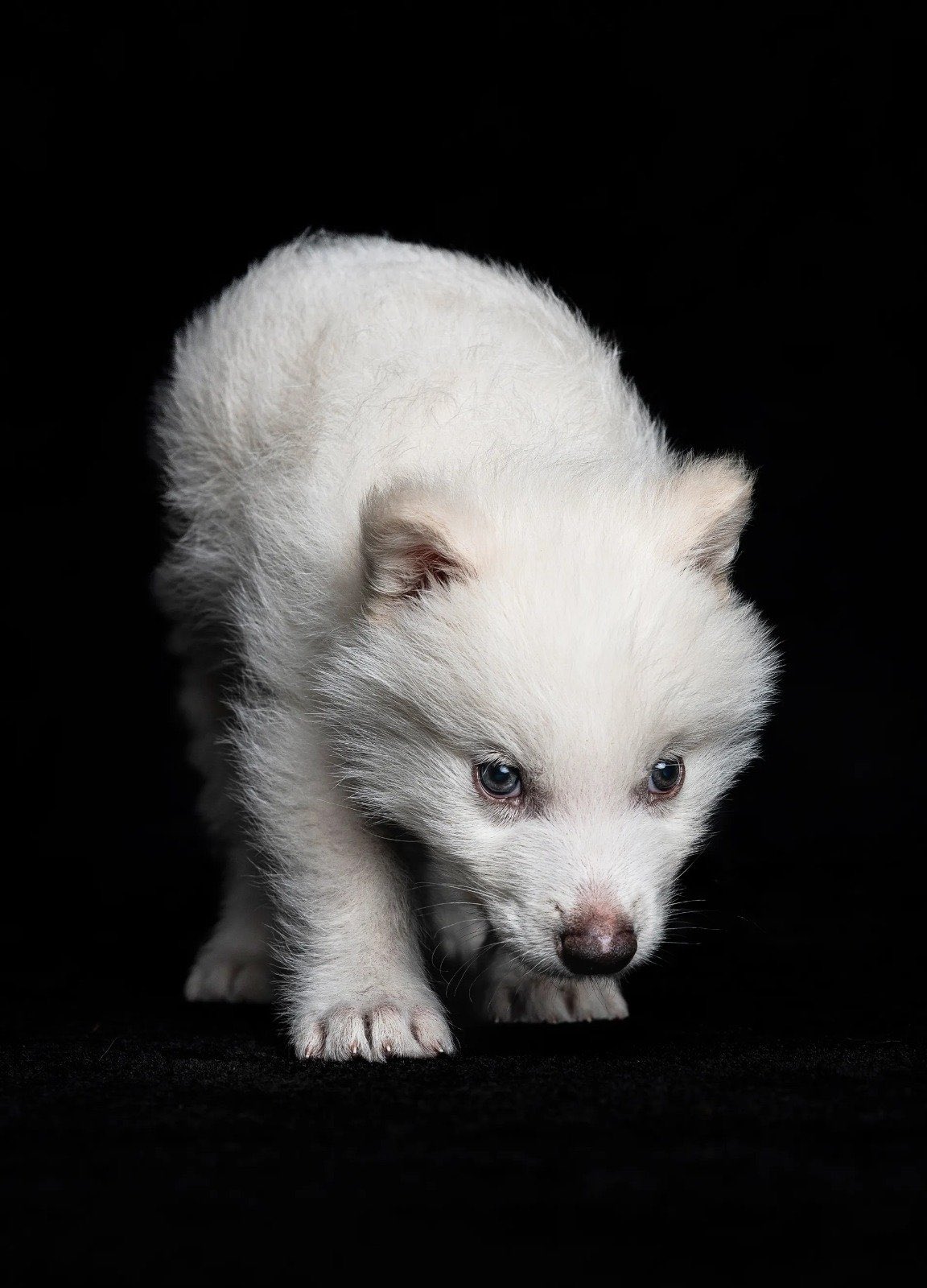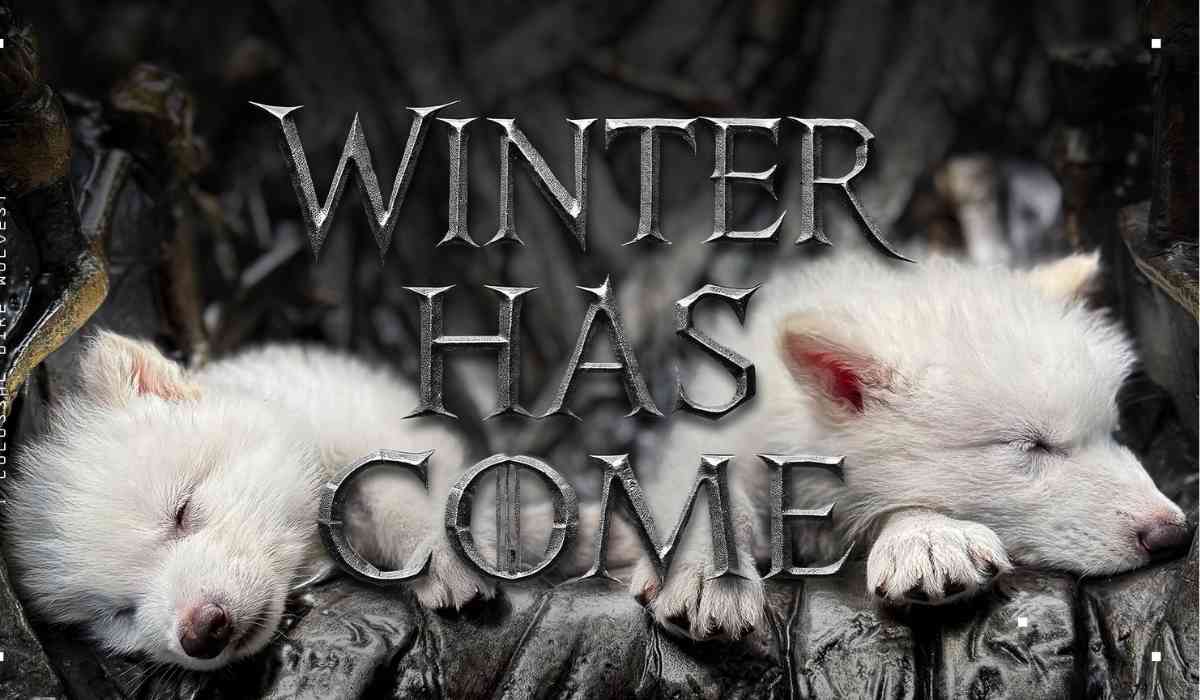The once-mythical dream of de-extinction is no longer just science fiction. More than 10,000 years after their extinction, dire wolves — made famous in pop culture by Game of Thrones — have been brought back into existence. In a feat that blurs the line between science fiction and reality, Colossal Biosciences, a Dallas-based biotech company, has created the world’s first de-extinct dire wolf pups using revolutionary gene-editing and cloning technologies, marking the first major step in bringing back one of the most iconic predators of the Ice Age.

Meet Romulus, Remus, and Khaleesi: The First Dire Wolf Pups of the 21st Century
On April 7, 2025, Colossal Biosciences unveiled three new additions to Earth’s fauna: Romulus and Remus, six-month-old male pups, and Khaleesi, a two-month-old female. Romulus and Remus, both six-month-old males, were born in October 2024, while Khaleesi, a two-month-old female, followed in January 2025. These aren’t just any pups — they are the closest genetic recreations of dire wolves (Aenocyon dirus), top predators that roamed the Americas during the Late Pleistocene epoch, between 129,000 and 11,700 years ago.
Currently residing on a secure 2,000-acre site surrounded by 10-foot-tall “zoo-grade” fencing, the pups are monitored via live camera feeds, drones, and an on-site team. The facility is USDA-registered and certified by the American Humane Society.
A Look Back in Time: What Were Dire Wolves?
Dire wolves (Aenocyon dirus) roamed North and South America between 129,000 and 11,700 years ago, thriving during the Late Pleistocene epoch.
-
Physical Traits:
-
Larger than today’s gray wolves
-
Muscular limbs and shoulders
-
Broad skulls with large teeth
-
Distinctive white coats
-
Unique howling and whining vocalizations
-
-
Diet: Their prey included bison, horses, and potentially even mammoths.
-
Extinction Cause: As Ice Age prey dwindled and human hunting expanded, dire wolves were pushed to extinction around 12,500 years ago.
SOUND ON. You’re hearing the first howl of a dire wolf in over 10,000 years. Meet Romulus and Remus—the world’s first de-extinct animals, born on October 1, 2024.
The dire wolf has been extinct for over 10,000 years. These two wolves were brought back from extinction using… pic.twitter.com/wY4rdOVFRH— Colossal Biosciences® (@colossal) April 7, 2025
The Science Behind the Resurrection
Bringing back an extinct species is no small task. Colossal’s groundbreaking achievement combined the best of cloning and CRISPR gene-editing, marking a significant evolution in the field of de-extinction science.
Step-by-Step: From Fossil to Pup
-
Ancient DNA Extraction:
-
A 13,000-year-old tooth from Sheridan Pit, Ohio, and a 72,000-year-old inner ear bone from American Falls, Idaho, served as the genetic blueprint.
-
The extracted ancient DNA was sequenced into a genome with 500x more data than any previous dire wolf analysis.
-
-
Comparative Genomics:
-
Scientists compared the dire wolf genome with that of the gray wolf (Canis lupus), its closest living relative.
-
They found 20 genetic differences across 14 genes responsible for traits such as:
-
Larger size and muscularity
-
White coat color
-
Broader skull and larger teeth
-
Enhanced vocalizations (howling, whining)
-
-
-
Cell Harvesting and Gene Editing:
-
Using a less-invasive method, endothelial progenitor cells (EPCs) were collected from live gray wolves.
-
The EPC nuclei were edited to express dire wolf traits. Special care was taken to avoid harmful side effects — for instance, the genes for white fur in dire wolves could cause blindness and deafness in gray wolves. Scientists circumvented this by turning off black and red pigmentation genes instead.
-
-
Cloning and Embryo Transfer:
-
Edited nuclei were transferred into denucleated gray wolf ova.
-
These ova developed into embryos, and 45 were implanted into two surrogate domestic hounds.
-
One embryo took hold in each, and after 65 days, Romulus and Remus were born via cesarean.
-
A third surrogate later gave birth to Khaleesi.
-
-
No Miscarriages or Stillbirths:
-
All surrogate births were successful with no complications, thanks to scheduled C-sections and close monitoring.
-
Colossal CEO Ben Lamm: "It was once said, ‘Any sufficiently advanced technology is indistinguishable from magic.’ Today, our team gets to unveil some of the magic they are working on."
Meet the first dire wolves to exist in over 10,000 years https://t.co/PiXmBEGrk6 pic.twitter.com/NJl20cxp80— TIME (@TIME) April 7, 2025
Are These Really Dire Wolves?
Not everyone in the scientific community agrees on the label.
-
Skepticism:
-
Adam Boyko, geneticist at Cornell University: The pups aren’t being raised in dire wolf packs or fed their ancient diet. They lack ancestral microbes and behaviors.
-
Vincent Lynch, biologist at University at Buffalo: "You can make something that looks like an extinct species, but not revive it completely."
-
-
Support:
-
Beth Shapiro, Colossal’s Chief Science Officer: “We are creating functional copies of something that used to be alive.”
-
Love Dalén, evolutionary genomics professor and adviser to Colossal: “They carry dire wolf genes — and that’s the closest we’ve gotten in 13,000 years.”
-
Whether these are true dire wolves or genetically engineered lookalikes remains a philosophical and scientific question. But in appearance and genetic function, they are the most accurate recreation of dire wolves the modern world has seen.
A Glimpse Into the Future: Mammoths, Red Wolves, and Pink Pigeons
Colossal isn’t stopping with dire wolves. The company plans to bring back other extinct species and strengthen endangered populations using similar techniques.
Upcoming Projects:
Woolly Mammoth (Target Year: 2028)
-
Using DNA from nearly 60 preserved mammoth remains.
-
Modifying nuclei from Asian elephants — their closest living relatives.
-
Already tested successfully in lab mice, producing 38 “woolly mouse” pups.
-
A surrogate elephant pregnancy is planned for 2026 (gestation period: nearly 2 years).
Endangered Red Wolves
-
Four red wolves cloned as part of a broader genetic rescue program.
-
Aimed at restoring genetic diversity and avoiding extinction.
Genetic Bottleneck: The Pink Pigeon Project
-
Indigenous to Mauritius, the pink pigeon nearly went extinct due to habitat loss and introduced predators.
-
Down to just 10 birds, captive breeding boosted numbers to over 650 — but with dangerously low genetic diversity.
-
Colossal is:
-
Extracting primordial germ cells (PGCs) from fertilized pigeon eggs.
-
Editing their genomes to introduce diversity.
-
Injecting edited PGCs into chicken embryos, which later produce pink pigeon chicks.
-
Partnerships and Indigenous Collaboration
Colossal isn’t working alone:
-
Partners include:
-
American Wolf Foundation
-
The Mauritian Wildlife Foundation
-
Save the Elephants
-
Conservation Nation
-
-
Collaboration with the Mandan, Hidatsa, and Arikara (MHA) Nation on the dire wolf project. The tribes hope to host dire wolves in North Dakota tribal lands.
George R.R. Martin with Dire Wolf Romulus (or Remus) 🐺 pic.twitter.com/G2ZkWBGtoG— westerosies (@westerosies) April 8, 2025
Ethics and Criticism: Is De-Extinction Worth the Cost?
With a valuation of $10.2 billion and partnerships with conservation groups such as Save the Elephants, The Mauritian Wildlife Foundation, and Conservation Nation, Colossal has the financial muscle to pursue its ambitious goals.
But not everyone is sold.
-
Financial Criticism: Some conservationists argue that the funds could be better spent on habitat protection and existing species conservation rather than reverse them.
-
Ecological Concerns: Reintroducing extinct species may have unpredictable effects on modern ecosystems. Karl Flessa, paleontologist at the University of Arizona: “It’s better to prevent extinction than to resurrect bio-replicas with potentially unknown consequences.”
Still, Colossal’s partnerships with groups like the American Wolf Foundation and the MHA Nation tribes of North Dakota — who may one day host dire wolves on their lands — suggest a broader vision that includes both past and future biodiversity.
Final Thoughts: A New Age of Life After Death
Still, Colossal’s partnerships with groups like the American Wolf Foundation and the MHA Nation tribes of North Dakota — who may one day host dire wolves on their lands — suggest a broader vision that includes both past and future biodiversity.
With inputs from agencies
Image Source: Multiple agencies
© Copyright 2025. All Rights Reserved Powered by Vygr Media.
























